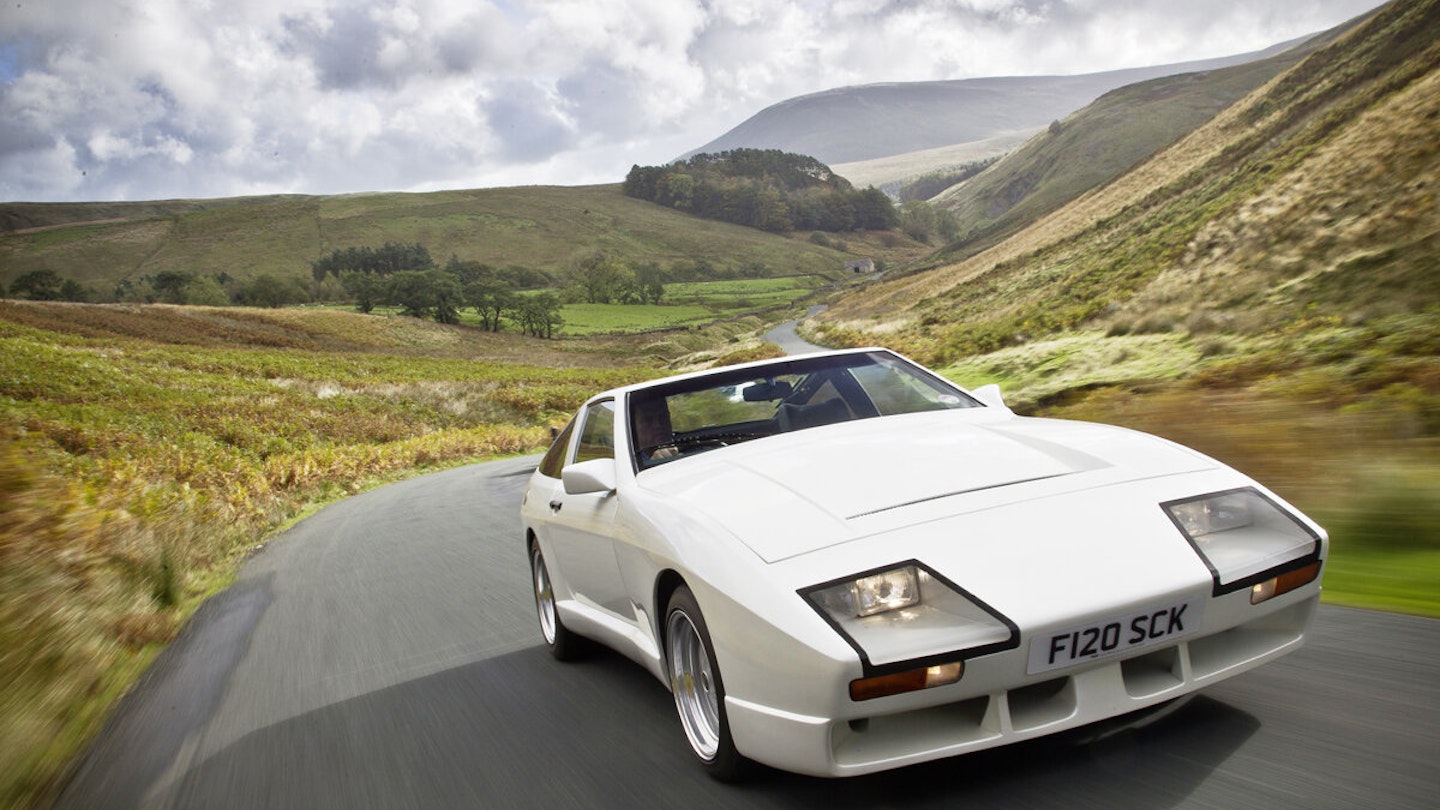TVR boss Peter Wheeler built his one-off personal car to test engineering ideas. We drive the ‘White Elephant’, fresh from restoration after 23 years in hiding, on his favourite roads
Words Sam Dawson Photography Charlie Magee
The pheasants of Bowland are in turmoil. They scuttle into the roadside bracken as the strident bark between the hills grows closer. Word has got round: an old enemy, a portent of imminent death not seen in these parts for more than two decades, has been sighted in Shield Wood. And it’s bearing down on them.
The source of the noise, an ethereal, pearlescent white wedge, emerges from behind a nearby hillock and dives down into the valley, rasping and crackling on the downchanges as the corners get tighter. Its low nose, devoid of insignia, sniffs the snaking road like a bloodhound. Peter Wheeler’s TVR ‘White Elephant’ is back.
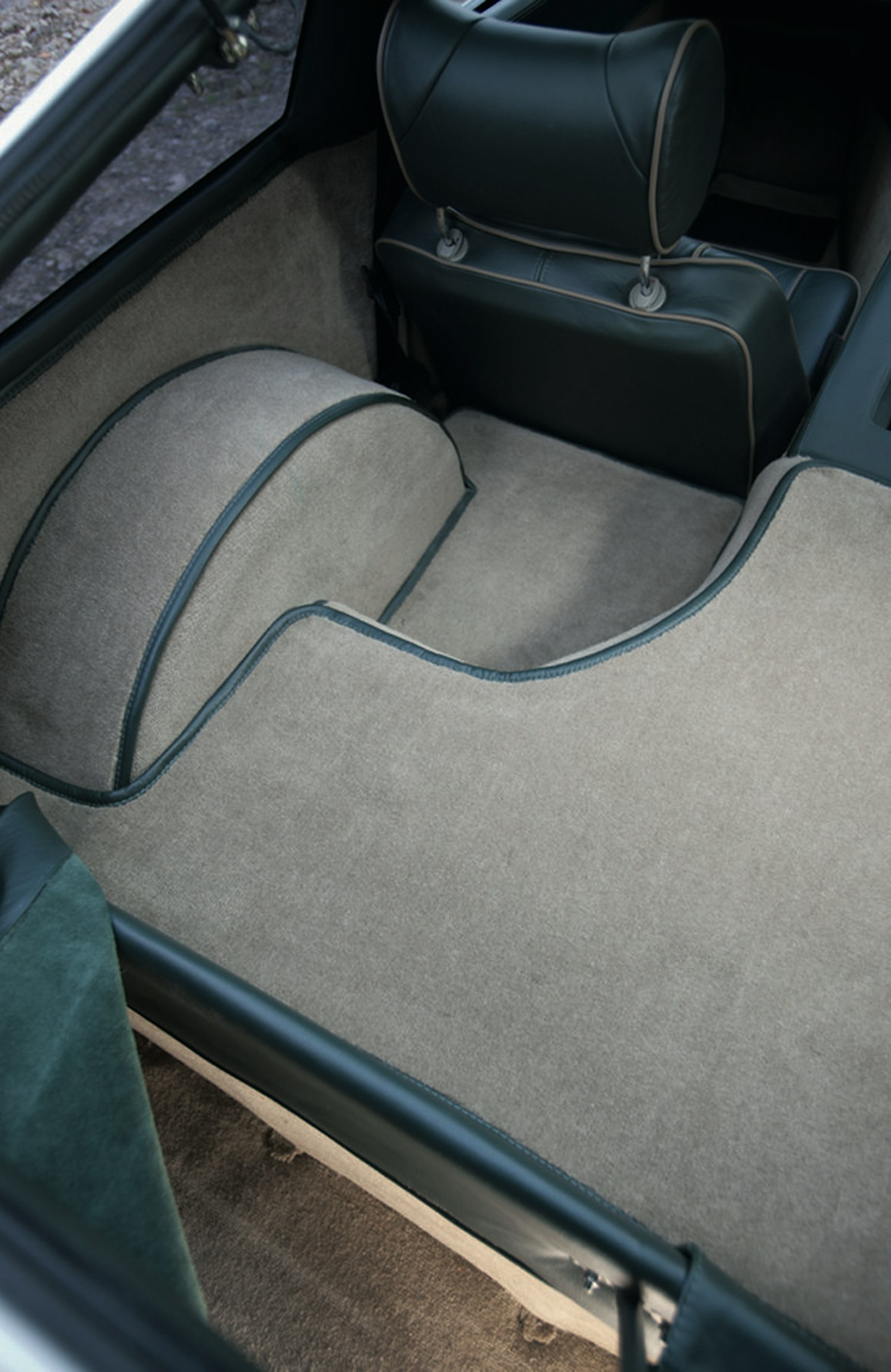
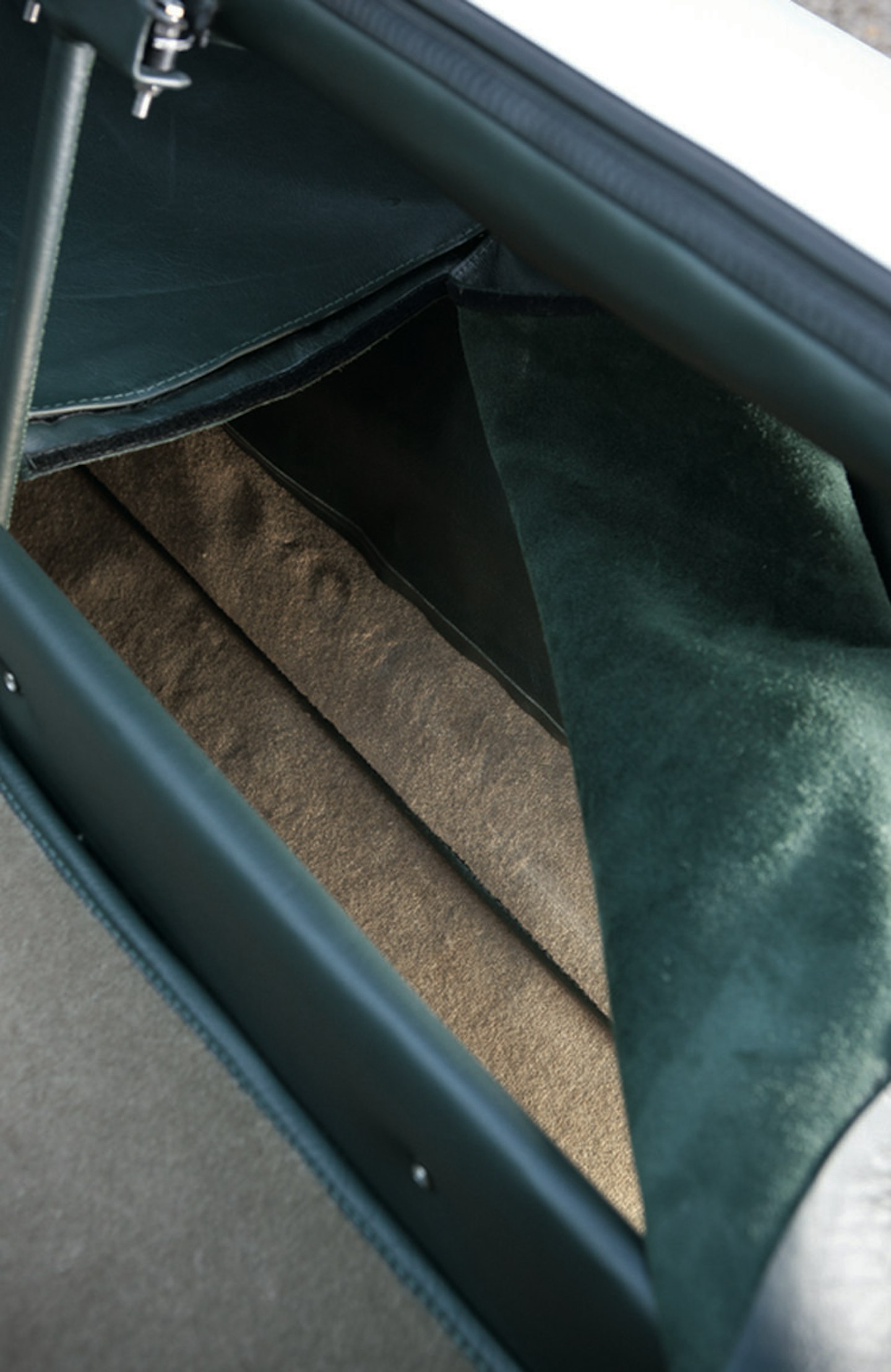
But the pheasants have nothing to fear from me. The gun racks in the Elephant’s boot are empty, no canine lurks in the sculpted dog basket behind the passenger seat, and I’m too preoccupied with the challenge of the road and an experimental V8 in near-race tune to go in search of game pie ingredients.
But I am in the right place to drive the White Elephant. The car was built at Wheeler’s behest in 1988, at a time when TVR wedges were reaching the limits of their development and new directions were being sought. For 18 months Wheeler used the car to commute between his home in Harrogate and TVR’s Blackpool factory, selecting routes through the Trough of Bowland that avoided heavy traffic. At the weekends, with Ned the dog in the passenger seat (he always rejected his specially made rear dog seat), Wheeler took the car shooting on the Duke of Lancaster’s estate; the ancient, Tolkien-inspiring Forest of Bowland.
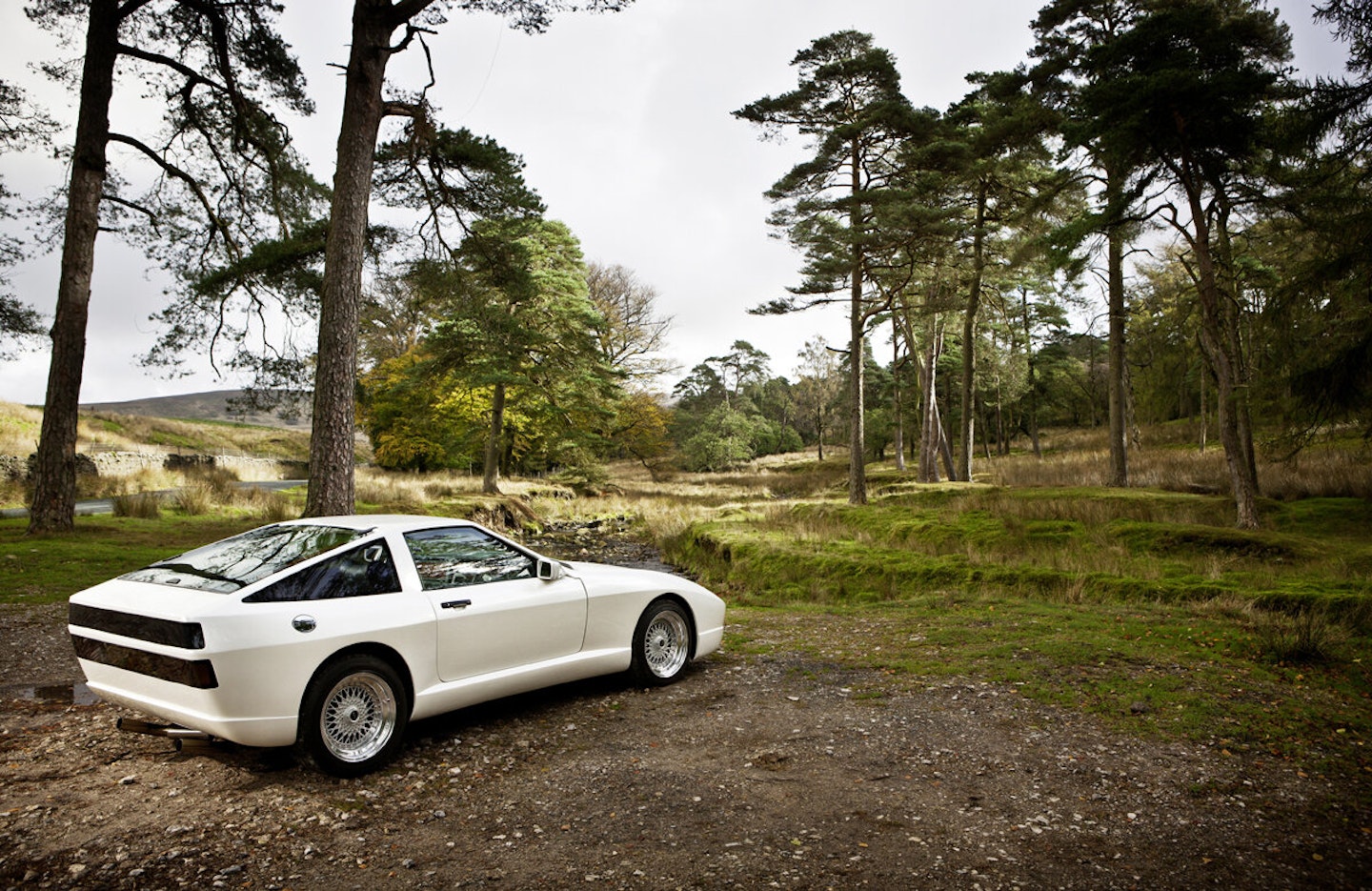
Driving this car is difficult, and it’s got nothing to do with the road or the V8’s power. It was only ever intended for 6ft 6in Wheeler, so the position of the driver’s seat, steering wheel and pedals are all fixed. At 6ft 1in I’m having to drive with arms and legs outstretched, steering with my fingertips and pushing the pedals with my toes. The overall effect is like wearing a much bigger man’s tailored jacket. I don’t feel as though I belong in this car.
That said, it’s actually friendlier than I expected. My previous experience of wedge TVRs is limited to early Tasmins, but memories of knuckle-bruising gear shifts and steering as heavy as a night-storage heater are banished here by a disarmingly light power rack. Its level of assistance is more akin to a luxury saloon’s, not as detached and lacking in feel as you find in a Jaguar XJ6, but certainly designed to disguise the weight of something much bigger and heavier.
The Elephant weighs just 1300kg and changes direction with startling speed. It’s essentially front-mid engined – the V8 sits so far back in the chassis that little hatches are incorporated into the footwells to gain access to the rearmost spark plugs. There’s no dive or nose-bob, the car just grips the road hard on its 225/45 R16 tyres and shifts position immediately, without threatening understeer or oversteer.
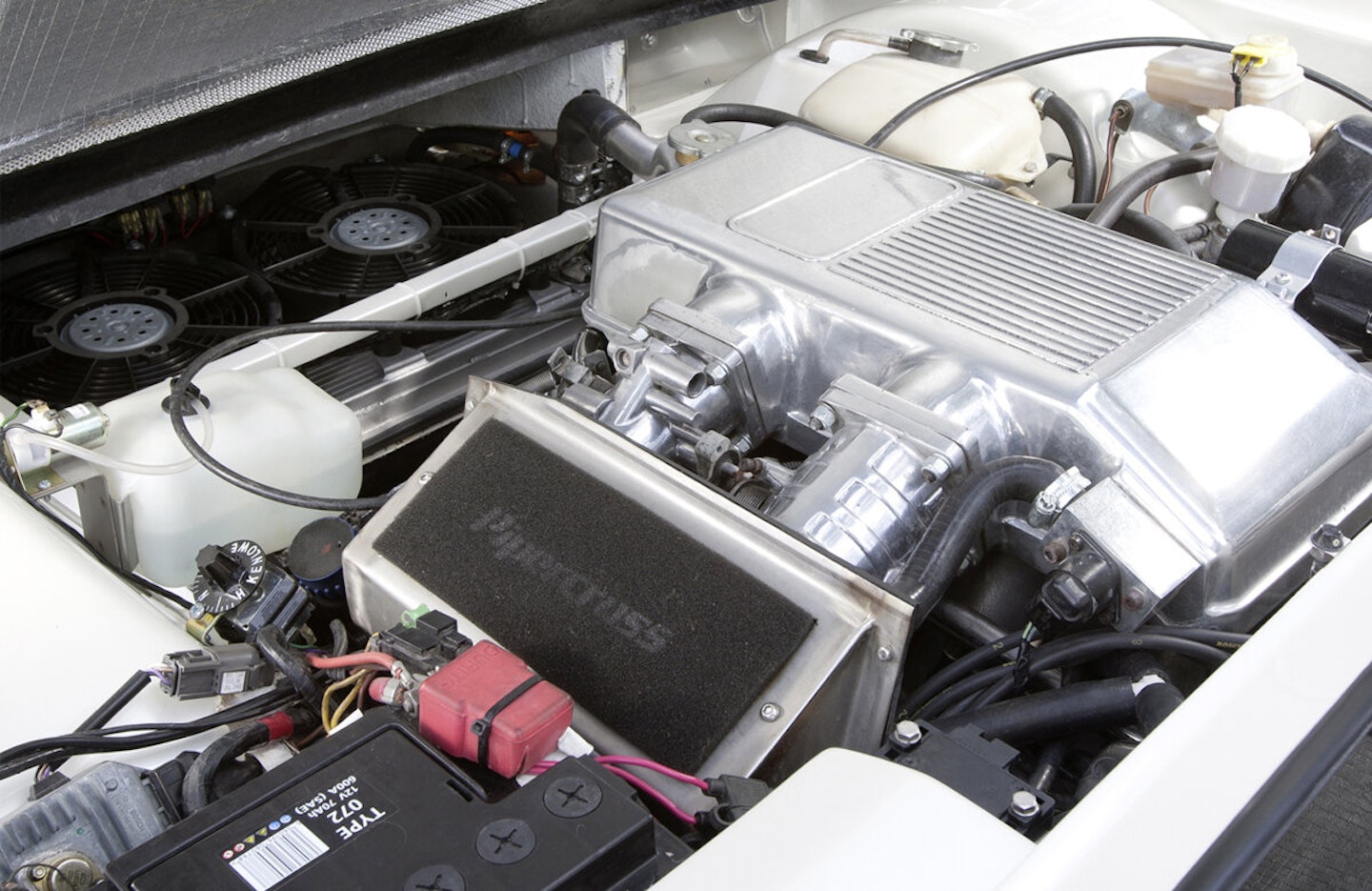
What’s even more surprising is that it does all this without the assistance of a rear anti-roll bar. One is fitted, but its linkages dangle dormant from the rear suspension assembly. Engineer Neill Anderson originally fitted it to the Elephant’s modified Tuscan Challenge racer chassis, but when it was connected the result was near undriveable, the rear end too stiff for positive roadholding, resulting in sudden, uncatchable oversteer. By disconnecting the anti-roll bar Anderson found perfect balance.
This sense of carefully managed, trial-and-error refinement extends to the bodywork and its impressive attempts to suppress wind noise. Like the Ferrari F40 and Porsche 959, it sports that most Eighties of features – flush-glazed headlights, which were rapidly replacing the Seventies vogue for pop-ups. They’re not as well-integrated into the Elephant’s lines as a Tasmin’s, but they help to cut drag and endow the nose with a clean, NASA-module profile reminiscent of a BMW Z1.
The flush-glazing obsession runs wild at the back. Tasmin designer Oliver Winterbottom’s concept of a Marcello Gandini-inspired ‘reversing panel’ remains: a glass swathe across the high tail to aid visibility. But it’s black-smoked like a Sharp music centre’s graphic equaliser screen, and an identical strip below conceals the rear light clusters and an unfeasibly complex registration plate with its letters printed on a back-lit transparent yellow honeycomb-composite wafer. Both disappear from view in low light when the engine is switched off.
The bodywork isn’t completely bespoke – stylist John Ravenscroft created it by grafting the nose of the unloved 1986 420 sports saloon prototype to a Tasmin coupé bodyshell. He formed the Porsche 944-style wide-bodied wheelarches by spraying the car with quick-drying foam, then shaping it with a craft knife and overlaying the glassfibre matting. It sounds amateurish, but the result is smooth, professional and cheaper than clay modelling, and it formed the basis of TVR body design into the Nineties and beyond.
There’s more experimenting beneath the bonnet, not all of it successful in period. Wheeler’s desire for a horizontally mounted radiator, to lower the frontal area even further, came at the expense of effective cooling. Howard Bryan, the White Elephant’s current owner and a former Tuscan racer, recalls, ‘He’d arrive at Tuscan Challenge races in the car, to promote TVR, and he’d creep sheepishly into the paddocks with the car wreathed in steam from the engine bay.’ During the car’s restoration Bryan set the radiator at a less severe angle and fitted a stronger pair of cooling fans. However, it set a design precedent: starting with the Griffith, a low-set radiator with a broad extractor vent running across the bonnet between the headlights became a TVR hallmark.
The engine is more bespoke. As Wheeler’s desire to tune the Rover V8 escalated the parts became more expensive, especially when Austin-Rover retired the SD1 and V8 production was essentially limited to torque-biased Land-Rovers. Wheeler had to start looking elsewhere for a powerplant.
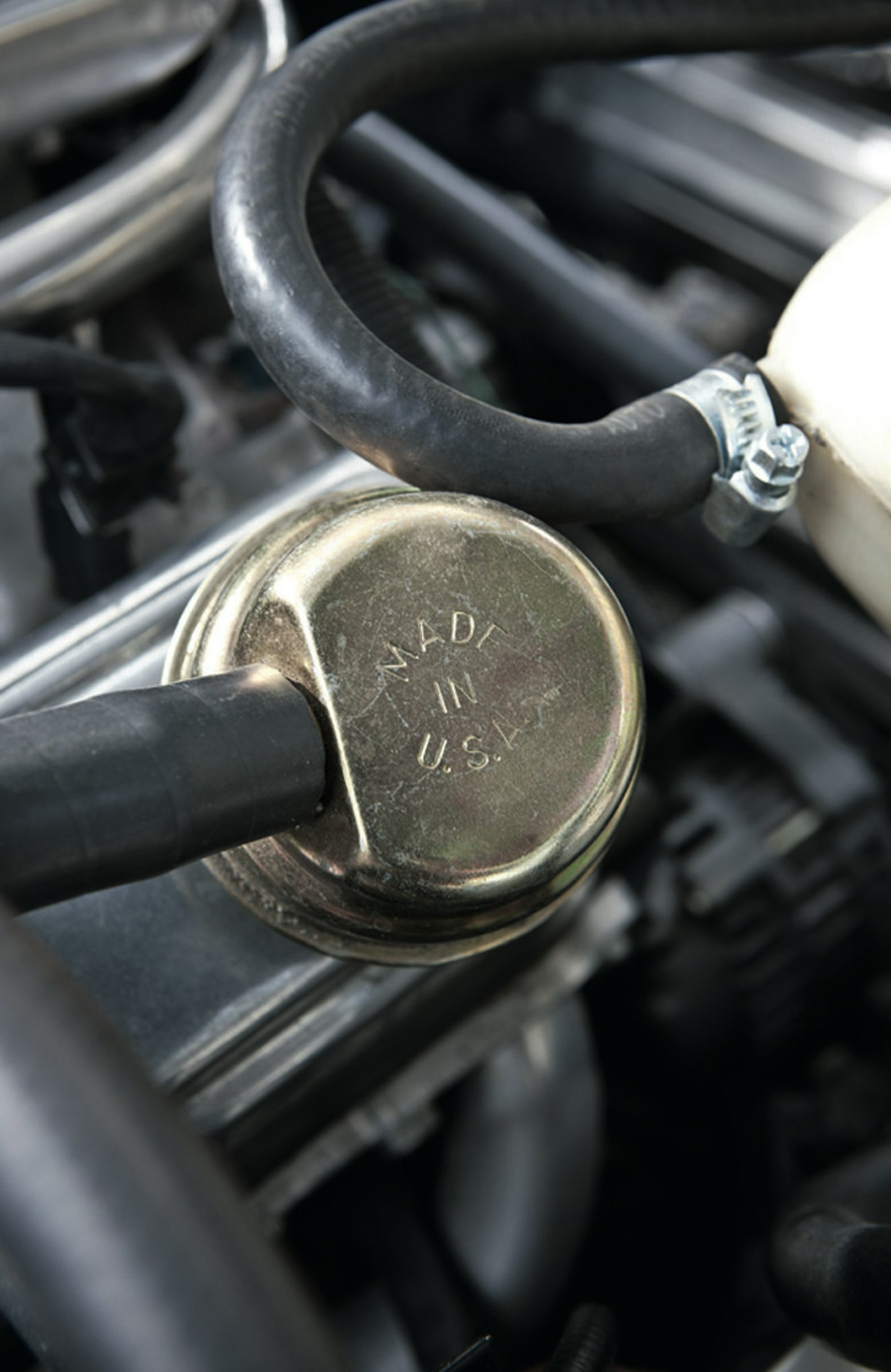
He found the answer in Australia, where Holden was looking to build racing versions of the new VL-series Commodore for the Bathurst series. Completely new V8s were needed for the racers because the mainstay of the Commodore range was now a rather meek Nissan straight-six. This may have been advanced compared to the old carburettor-fed Holden V8, with its origins in 1969, but wouldn’t stand a chance around Mount Panorama against arch-rival Ford’s new Sierra Cosworth.
Wheeler persuaded the Australian company’s in-house tuning division, Holden Engine Company, to part with its first pre-production prototype SS Group A SV engine, and HEC engineer Warwick Bryce flew across the globe to spend three days in Blackpool setting it up. Despite being five litres, it shares only its cast-iron block with the old Holden lump. It features high-lift racing cams, a lightweight crankshaft, electronic fuel injection and – crucially for Wheeler – it produces far fewer emissions than the old Rover V8s even in its heightened state of tune. Ever the canny businessman, he had his eyes on the American export market.
It fires up with a bubbling, fervent urgency on the turn of the key. Although relatively quiet at idle for a TVR, its exhaust note has an aggressive falsetto edge that sounds quite unlike the ‘thumping great V8’ cliché with which Eighties TVRs are associated.
Indulge the throttle and it rewards with supercar sophistication. The sound remains pleasantly subdued up to 3500rpm, although it always retains that edge of free-revving urgency under load as I work my way through the firm yet positive five-speed gearbox.

Beyond 3500rpm all hell breaks loose. With the gearbox in third, the accelerator pedal becomes an addictive yet useful switch. Prod it and my scalp hits the headrest as the Elephant surges forward at a rate that instantly turns car-demolishing drystone walls into a grey blur. The engine continues to rev, emitting the kind of shrill yet full-bodied yowl you’d expect from a Group B Ferrari 308 Michelotto as it eagerly urges you to wring out every last one of its 440bhp, and I’m grateful for that quick-witted steering as the glassfibre nose tucks and twitches, dodging rocky outcrops and errant sheep.
But back off and – unlike many screaming Italian supercars – there’s a vast reserve of 390lb ft torque to sit on. Ride the torque wave, wrenching the lever between third and fourth gears depending on gradient, and the Elephant reveals another aspect to its character, one I never expected to find: it’s a great grand tourer.
Throughout my drive the only note I jotted down about ride quality was ‘Jag IRS’. This says it all – the way the Jaguar XJ-S-derived rear suspension soaks up bumps and imperfections, even when fitted to a lightweight plastic sports car, makes it a comfortable place to sit even with a barely constrained supercar powerplant perpetually threatening to erupt under the bonnet. Add to this the lightness of the steering and the soft yet supportive mattress of torque to fall back on, and I can imagine covering vast distances with ease in the Elephant. Just as well really – it’s nearly 80 miles from Harrogate to Blackpool.
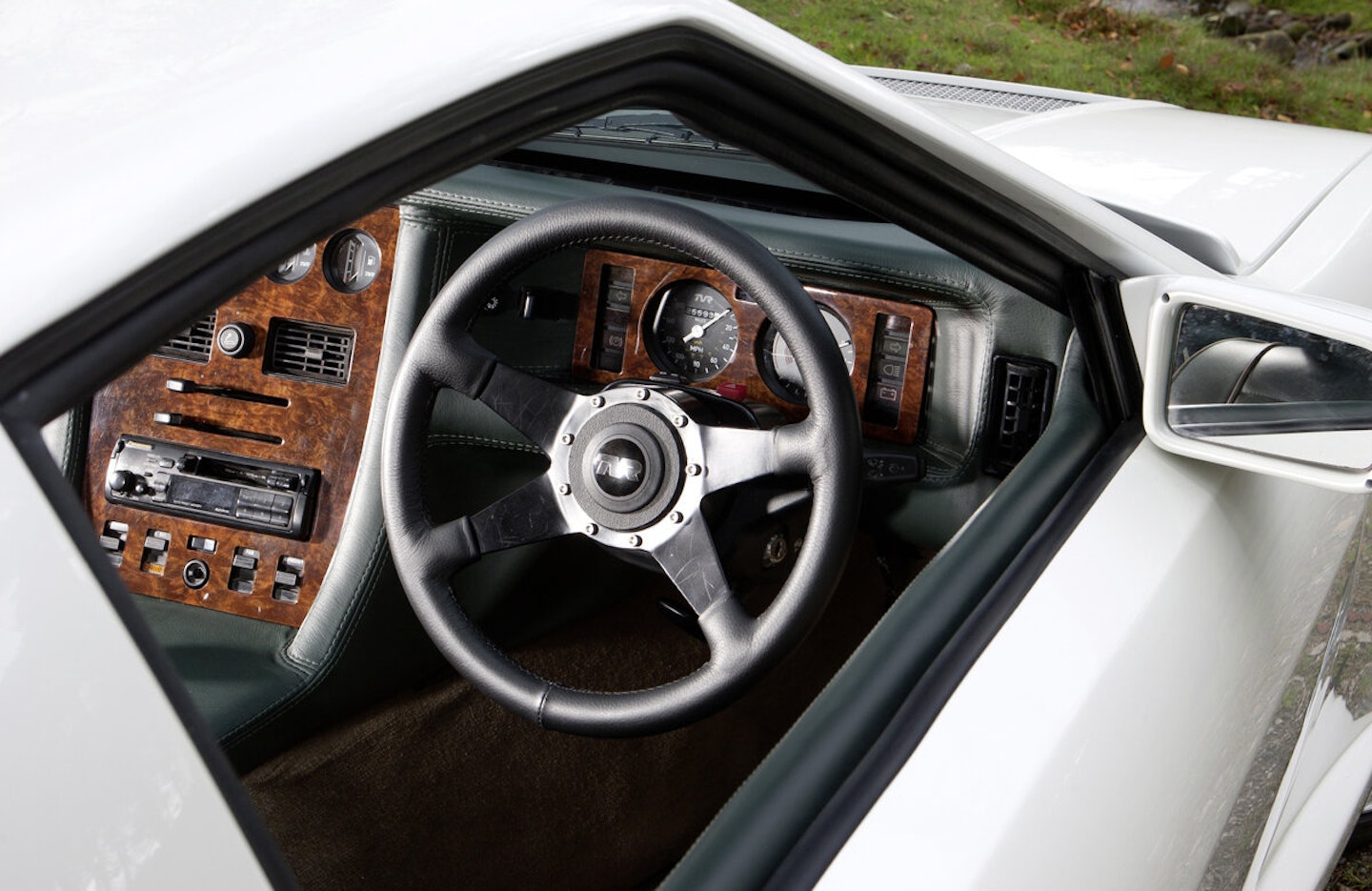
And then there’s the interior. Granted, it’s festooned with bits from Austin Metros and Maestros, but the strong smell of high-quality leather intoxicates, overriding such details.
In fact the car to which the Elephant feels most akin is the Eighties Aston Martin V8 Vantage. The light steering, taut cornering, luxurious cabin and the cultured, refined way it transmits its thoroughbred V8 fury to the tarmac are all similar. However, while the Aston is a big car that merely feels smaller because of its chassis set-up, the Elephant is genuinely compact and pared-down. While it’s a shame this British Alfa SZ – or is it a Lancastrian V8 Zagato? – never made it to production, it’s clear that its combination of polished refinement and ballsy rawness heavily influenced the 1990 Griffith. So while the Griff may be TVR’s homo erectus evolution, the White Elephant is the missing link between the fast yet blunt instruments of the past and its more sophisticated but still wild supercars of the Nineties. It may have been Wheeler’s White Elephant, but it was no folly.

1988 TVR ‘White Elephant’ specifications
Engine 4981cc, V8, sohc per bank, electronic fuel injection Power and torque 440bhp @ 5750rpm; 390lb ft @ 3600rpm (est) Transmission Five-speed manual, rear-wheel drive Steering Rack-and-pinion, power-assisted Suspension Front: independent, double wishbones, coil springs, telescopic dampers, anti-roll bar. Rear: independent, wishbones, trailing arms, dual coil springs, dual telescopic dampers, anti-roll bar (fitted but disconnected) Brakes Discs front and inboard rear Weight 1300kg/2870lb (est) Performance Top speed: 165mph; 0-60mph: 4sec Fuel consumption 20mpg Cost new n/a Value now (2014) £110,000
